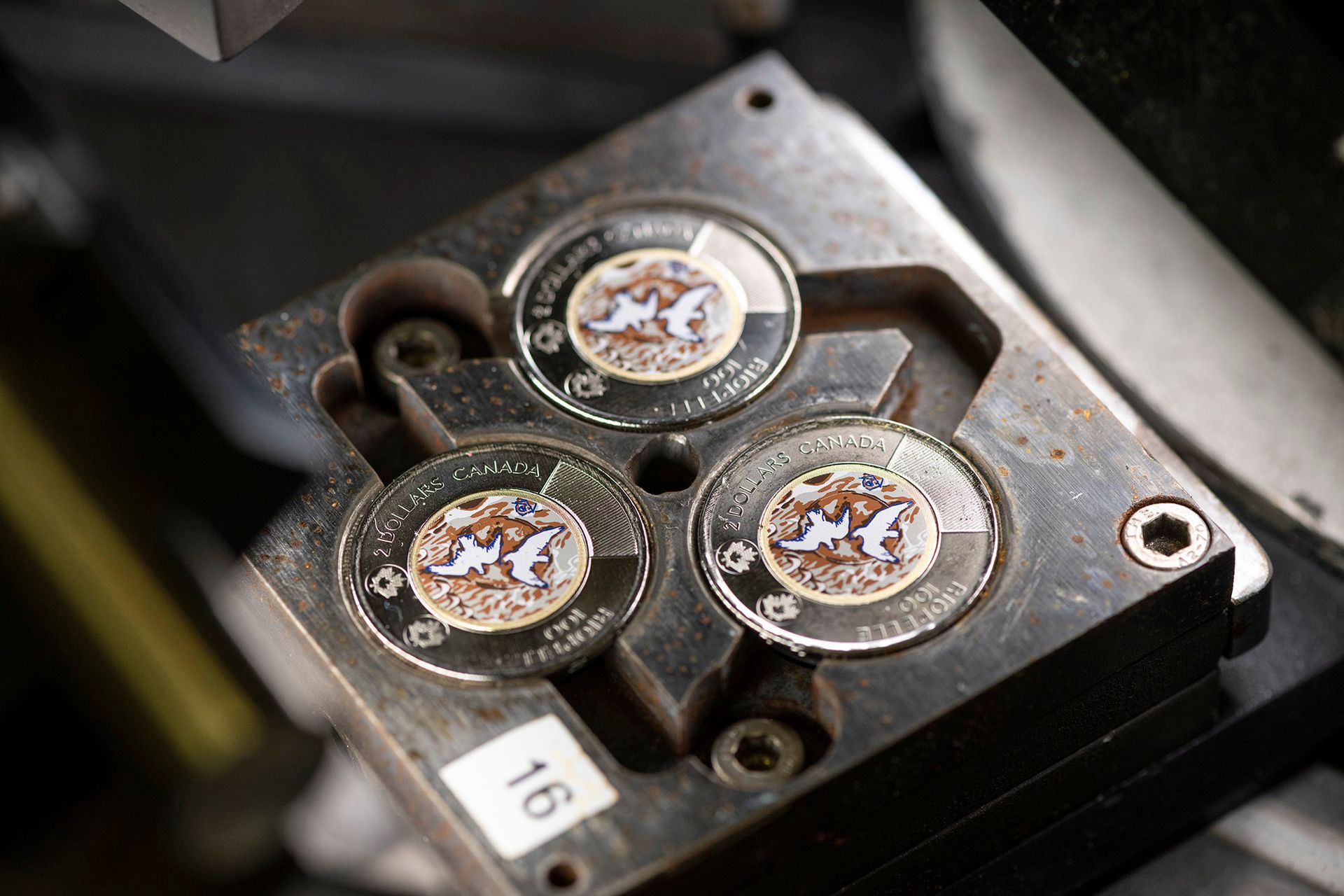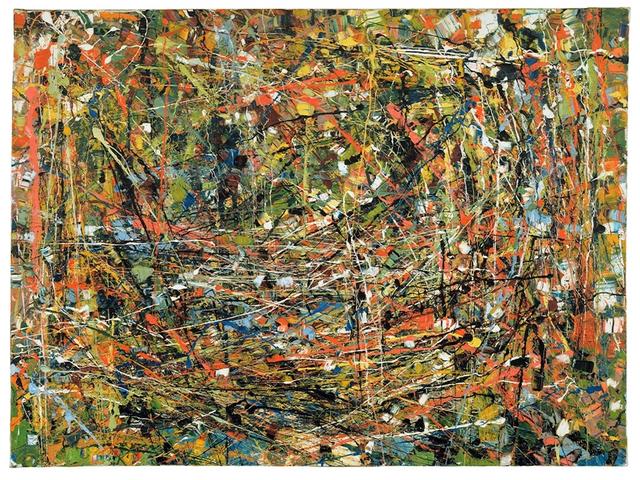On 7 October, Canada will mark the centennial of legendary abstractionist Jean Paul Riopelle. Though he died at age 78, in 2002, Riopelle lives on through his art—including a global programme of centenary shows and other tributes—and, now, through a special two-dollar coin just issued by the Royal Canadian Mint.
An event Tuesday (3 October) marking the release of the new two-dollar coin—which Canadians lovingly call a “toonie”, as opposed to the one-dollar coin, called a “loonie” because it features an image of a loon—took place at the National Gallery of Canada in Ottawa, which is also hosting the blockbuster show Riopelle: Crossroads in Time (27 October 2023-7 April 2024), with some 130 works in all. In attendance were mint president and chief executive Marie Lemay, the Riopelle Foundation’s executive director Manon Gauthier and Jean-François Bélisle, who was recently named director and chief executive of the National Gallery.
“On the hundredth anniversary of Jean Paul Riopelle’s birth, we are delighted to issue a commemorative circulation coin honouring him as one of our greatest artists, whose talent and vision influenced a dynamic period in global artistic expression and touched admirers of his work and fellow artists in Canada and around the world,” Lemay says.
The Riopelle centennial coin depicts a pair of wild geese, a cropped detail from his famous work L’Hommage à Rosa Luxemburg (1992), what Gauthier calls “the ultimate symbol of uncompromising freedom”, animals for which the artist had a particular fondness, and is now in circulation across Canada. The obverse pictures the late Queen Elizabeth II. Mintage is limited to three million coins, of which two million feature the colours of the original detail from the painting.

Producing the new Riopelle 100 coins at the Royal Canadian Mint Courtesy Royal Canadian Mint
Gauthier says the image was chosen with the help of the artist’s daughter, Yseult Riopelle. “In trying to select a masterpiece, we were confronted with several constraints: how do we identify an artwork that will fit the middle of a two-dollar coin, while ensuring the work remains integral?” she says. “In the end, we opted for an excerpt from L’Hommage à Rosa Luxemburg, an iconic masterpiece from Riopelle.”
The original work, an immense 40-metre-wide triptych comprised of some 30 panels currently on show at the Musée National des Beaux-Arts du Québec (a digitised version made an appearance at recent the G20 summit in India) is the artist’s largest and is considered his “artistic testament”, says Gauthier. “It is a story of love, loss, life, death and mourning.”
Riopelle painted Hommage in tribute his partner of many years, American artist Joan Mitchell, who predeceased him by a decade, and was created at his studio on an isolated island in the estuary of the St Lawrence River near Québec City. He took up residence there in his last years after having spent much of his life in Paris, where he moved in his early twenties. A plan is afoot to build a small institution devoted to Riopelle on an adjacent St Lawrence island.
“I consider Jean Paul Riopelle to be one of the greatest Canadian artists of all time and, importantly, a true cultural hero, both here in Canada and internationally,” Michael J. Audain, the Riopelle Foundation's chair, said in a statement. “Through this commemorative tribute, the Royal Canadian Mint is joining the Riopelle Foundation for these unprecedented celebrations, forever engraving his memory in Canadian history.”




